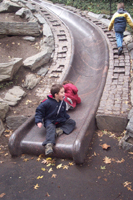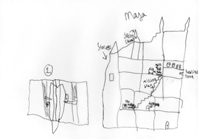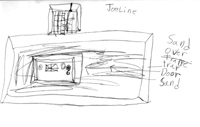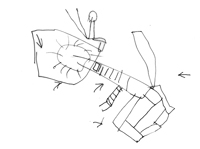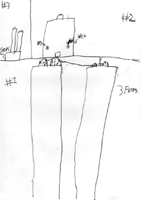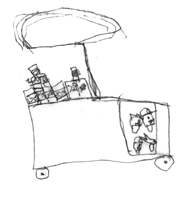The first group seemed very confident and capable of brainstorming what a memorial could be and the elements it would include, which seemed influenced by the recent research they had done on parks and playgrounds.
Maya: When you go there you might think of the World Trade Center... you would want to think about it. In the World Trade Center they had all kinds of shops. There might be
a sandbox where you could rebuild the town that was there out of sand. You could have the real signs of the stores and shapes and tools for building the stores. If I made the bakery I could get the sign to put on it and then if another boy came to build the bookstore he could get that sign.
Alex: A memorial park could be more of a playground. There could be a different world, but I think that's impossible. Another idea would be to build two towers with stairs in them and chairs and windows and steering wheels. This is an impossible one: two towers coming out of the sandbox. I have an idea about what Maya said. In the sandbox you could have a wet and dry sand machine. It would have buttons to press. You get the wet sand to build with.
Jamie: Two towers out of cardboard big enough for the class to go in. Put in a window and then put some wheels on it. And then put it in the sandbox and then push it into another sandbox.
River: I think the cardboard would collapse and then get soft and get soggy and then it would get all yucky and then plants would grow out of it.
Joachim: You could use metal steels (drawing large tall shapes with his hands). You could hold sand up on top.
Alex: Parents and caregivers would never let kids climb up there it wouldn't be safe.
Journey: How about a playground and a little bit of what Maya and Alex were saying. Stairs up and down and when you go down two different...
Alex: It wouldn't work. We'd hit trains and rocks or dirt or China. It would take a year or two to build.

